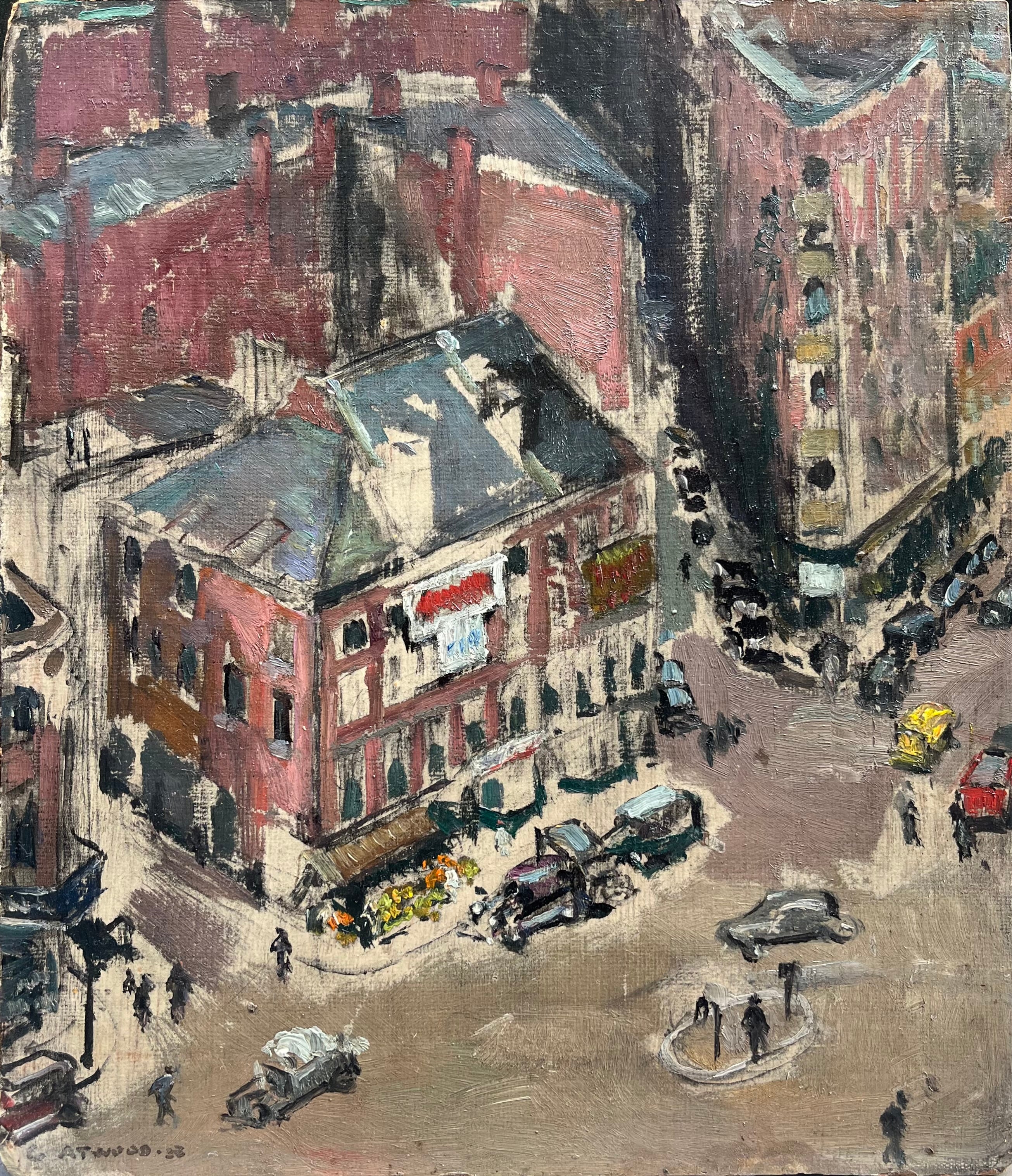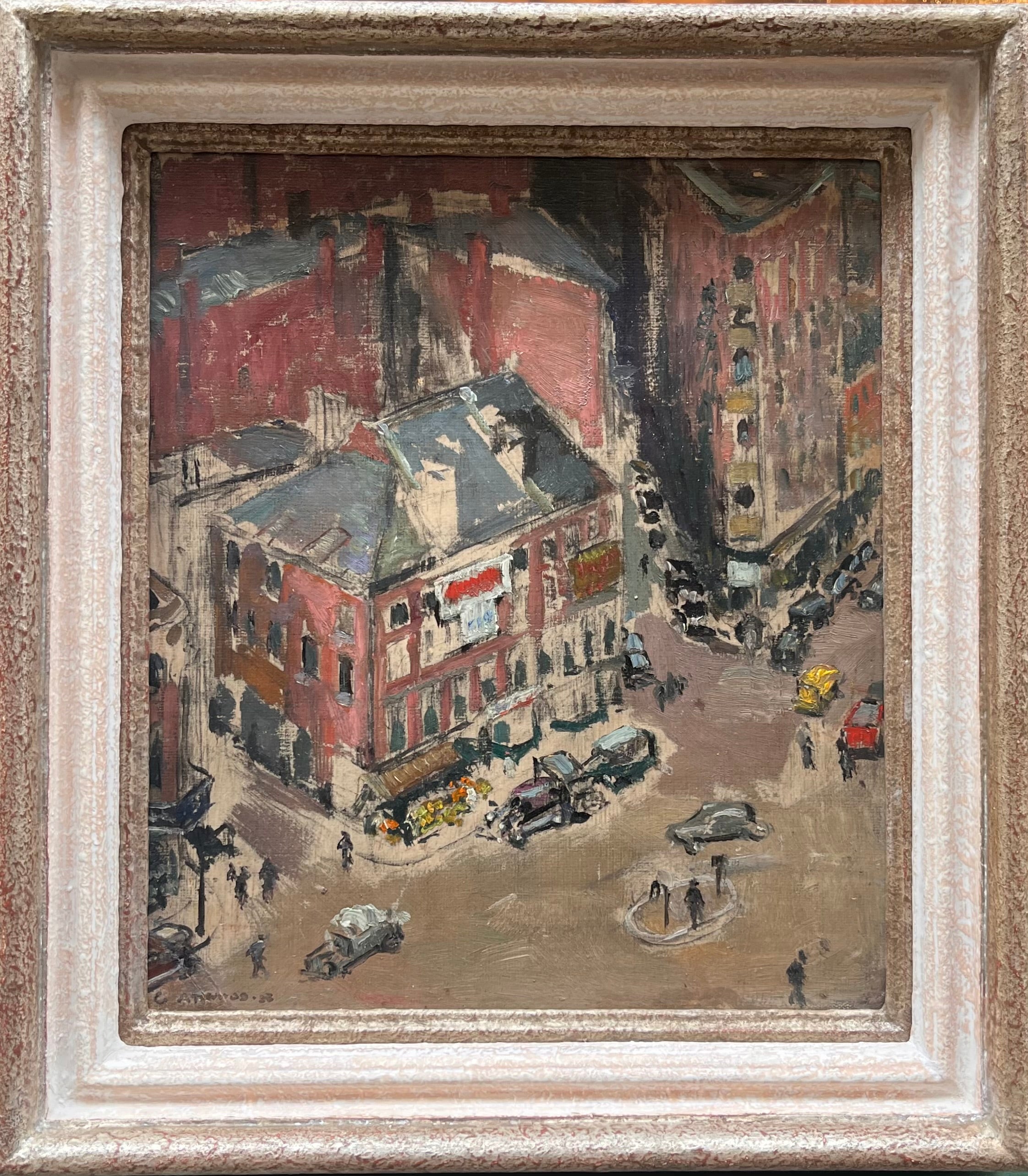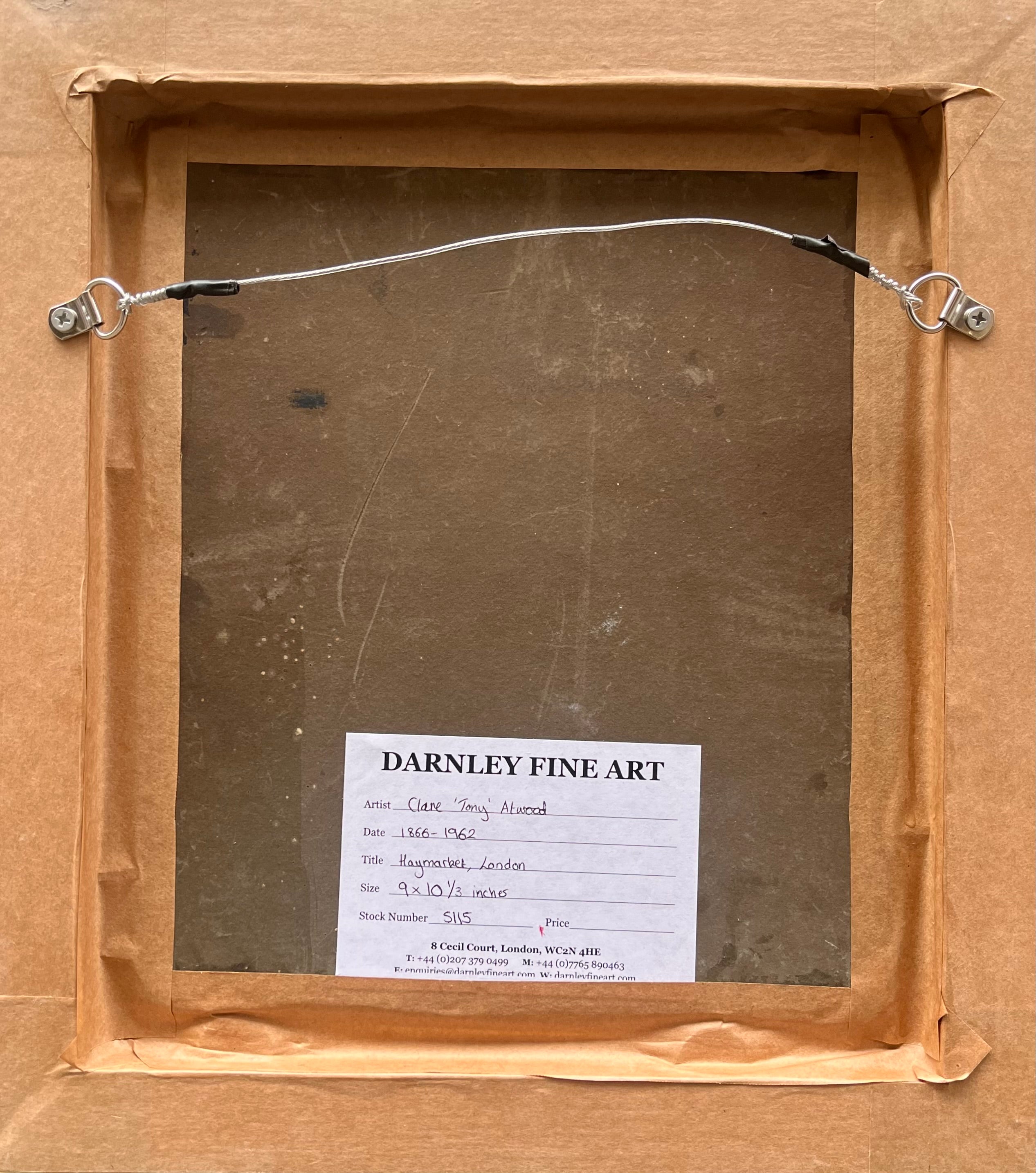

Clare 'Tony' Atwood
Haymarket, London
Oil on board, signed and dated '33' lower left
Image size: 9 x 10 1/3 inches (22.6 x 26.3 cm)
Inscribed verso:
"To Miss Miles
from Clare Atwood
with best wishes
September 1938"
This charming painting depicts the central London street of Haymarket, part of the celebrated theatre district that Atwood would have known from her relationship with actress Edith Craig. The broad and rough brushstrokes create a sense of movement and speed that denotes the hustle and bustle of the English capital. The lack of detail of the figures - all clad in black, with few determining features - is reminiscent of the sense of individualism in large cities, where people are merely background extras as opposed to their own person. Against the reddish-brown palette of the artwork, the little black flecks that denote cars and people appear like small insects. The only splashes of colour in the image belong to advertisements and a greengrocer’s stand.
Atwood’s raised viewpoint in this image is incredibly intriguing and is a feature of many of her paintings of London. It is possible that she painted this from the roof of one of the Haymarket theatres, or from a high-up flat. It presents the viewer with a rarely-seen view of London, one which contains the aforementioned freneticism that is still present today, a century later.
Clare ‘Tony’ Atwood
Clare Atwood was born in May 1866 in Richmond, London. She studied at the Westminster School of Art, and then at the Slade. At the Slade, she was taught by one of the founding members of the New English Art Club, Frederick Brown.
Atwood first exhibited her works at the New English Art Club in 1893, of which she became a member in 1912. Also in 1912, Atwood hosted her first solo exhibition at the Carfax Gallery. Atwood was also known to have exhibited at the Women’s International Art Club.
During the First World War, Atwood was commissioned by the Canadian government to paint scenes from a Canadian military camp in Folkestone. Whilst at a railway station along the way, Atwood painted a scene depicting soldiers waiting for trains to take them to the front lines. She was also commissioned by the Women’s Work Committee of the Imperial War Museum to depict the activities of the Women’s Voluntary Service.
Atwood was a lesbian and lived with writer Christabel Marshall and actress Edith Craig in Kent after her studio near St Paul’s Cathedral was bombed in 1916. The three - known as ‘Edy and the Boys’ - were close friends with many queer artists and writers, including Radclyffe Hall, Vita Sackville-West, and Virginia Woolf. Amongst this circle of close friends, Atwood was known by the male name ‘Tony’. Craig and Marshall were committed Suffragists, a theme that was reflected by Atwood in her paintings of the Women’s Voluntary Service.
After the war, Atwood turned her attention to depicting themes from theatre and even designed props for Craig’s productions. She painted a series of works depicting Craig’s mother, the actress Ellen Terry. Atwood also acted on stage occasionally, and was part of the Pioneer Players.
Atwood passed away in 1962 after heart failure. She was buried alongside Marshall, with a memorial to Craig located nearby. Her works are part of collections in the Imperial War Museum, Tate, National Art Gallery of New Zealand, and the V&A.





